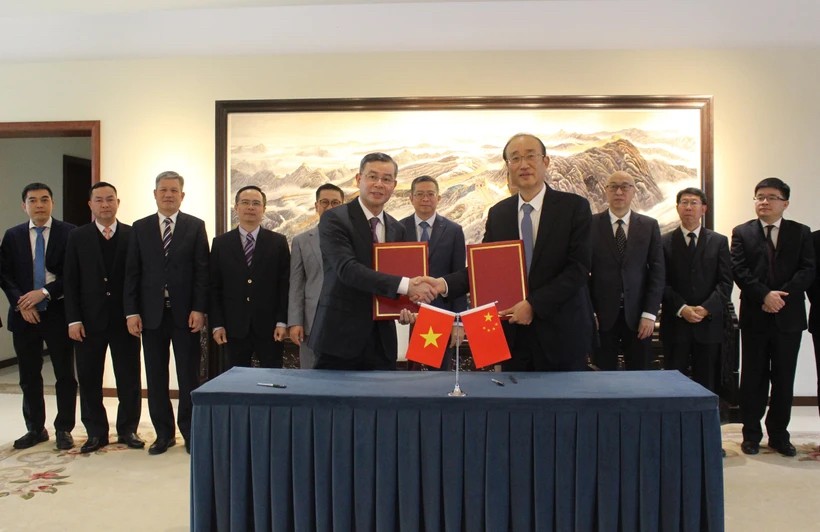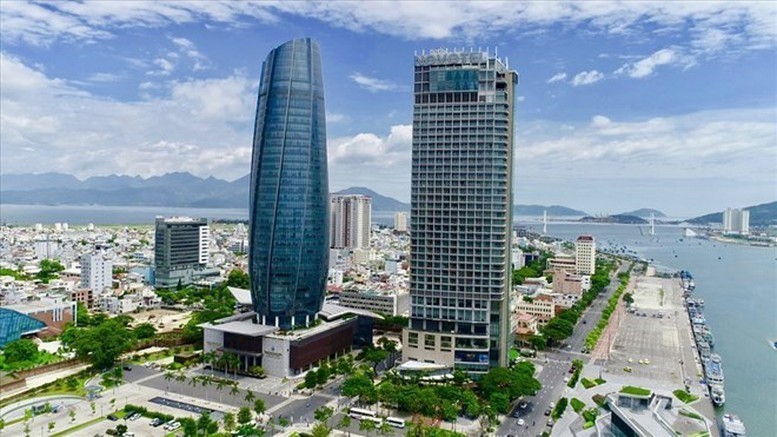If ‘Made in Vietnam’ does its miracle for ‘Made in China’ replacing as Vietnam did?
| Bphone B86 officially launched marking 11-year Vietnamese phone creation of Bkav | |
| VinGroup donates 2,400 Made -in- Vietnam ventilators to Russia and Ukraine | |
| Amazing cardboard supercars made in Vietnam |
An article written by writer David Hutt on the asiatimes that: "Why ‘Made in Vietnam’ won’t replace ‘Made in China’"
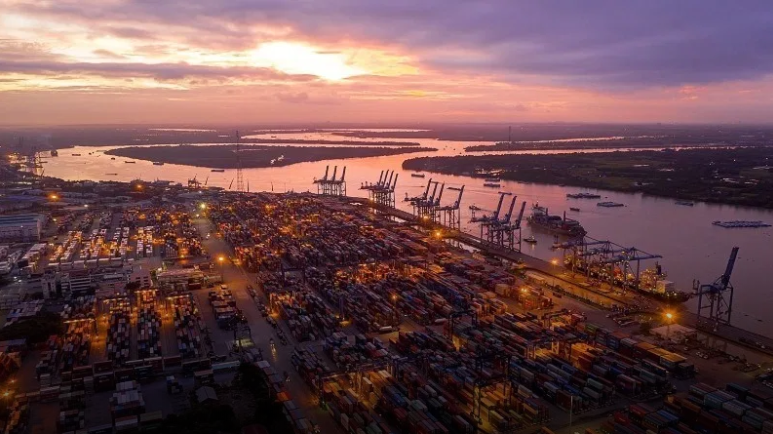 |
| As US seeks to decouple from China, it’s a reach to think Vietnam will easily become the world’s next factory floor (Illustration photo) |
The writer gives his opinions that Vietnam appears to have won its health war against Covid-19 after recording zero deaths and winning international praise for its crisis management, speculation is rising the nation could also be an economic winner of the pandemic.
As the results, Vietnam is widespread anticipation to benefit from America’s moves to economically “decouple” from China by moving supply chains out of China and into other regional countries including Vietnam.
An evidence is said that in early May, regional media reported that US tech giant Apple began producing 3-4 million units – or about 30% for the quarter – of its AirPod earphones in Vietnam in April, a sign that the firm is relocating some of its supply chains away from China.
The report noted that many of Apple’s suppliers, including Foxconn and Pegatron, and iPad maker Compal Electronics, are also expanding operations in Vietnam. Inventec, an AirPods assembler, is reportedly building a plant in Vietnam.
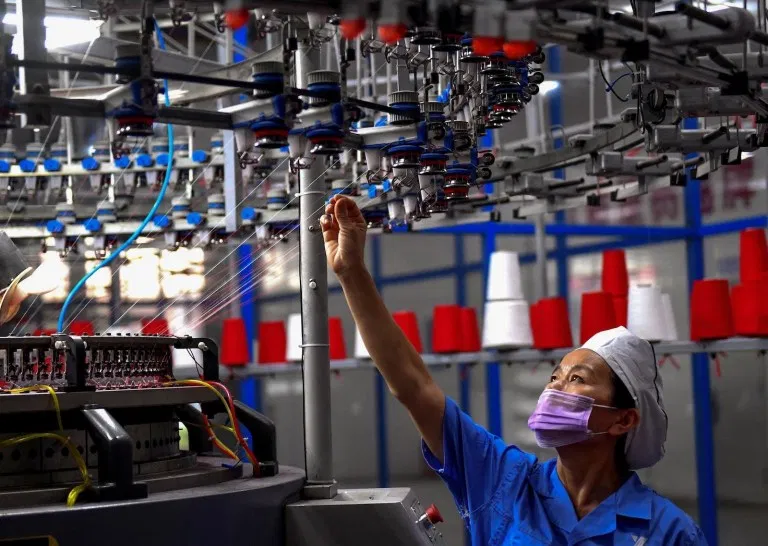 |
| A growing number of companies shifting production out of China to Vietnam. Photo: AFP |
At the same time, Vietnam is now desperately seeking new growth drivers, particularly as foreign investment fell by 15% between January and April compared to the same period last year.
In early May, Prime Minister Nguyen Xuan Phuc appealed to the country’s business and public sectors to “put our heads together to restart Vietnam’s economy.”
“Vietnam’s economy is like a compressed spring waiting to be stretched out,” Phuc told domestic and foreign business representatives in an online event billed as Vietnam’s largest-ever business conference.
In recent years, many multinational firms relocated at least some of their supply chains out of China to places like Vietnam, where labor is cheaper and infrastructure comparably sufficient.
Last year, South Korea was the largest investor in Vietnam, providing almost a fifth of the total US$38 billion of new foreign direct investment in the country. It was followed by Hong Kong, Japan and China.
The global economy was already suffering pre-pandemic from a protracted US-China trade war that some hoped would draw to a close by the end of January via a “phase one” agreement.
Yet Vietnam was one of the few Asian economies to actually prosper from the trade war, as higher US tariffs on Chinese exports forced manufacturers to move their operations out of China.
For the same reasons, Vietnam could prosper from the coronavirus-induced move of supply chains out of China.
Minimum wages in Vietnam are lower than even in poorer neighbors like Cambodia, currently ranging between $132 and $190 per month depending on location, he wrote.
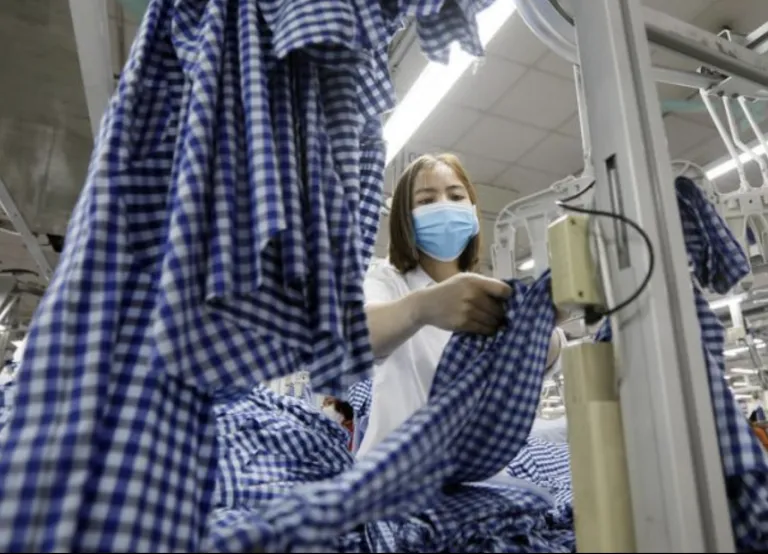 |
| A Vietnamese worker toils in a garment factory in a file photo. Photo: AFP |
Vietnam is party to more than a dozen free trade agreements, including the 11-member Comprehensive and Progressive Agreement for Trans-Pacific Partnership and a new one signed with the European Union last year.
Some analysts refer to this as the expansion of “China plus one” or “China plus two” strategies, where foreign firms maintain some supply chains in China but diversify operations to other countries, especially those geographically near China, like Vietnam.
However, he states clearly that: while the expectant surge of new investment from firms leaving China for Vietnam may soften the coronavirus-induced economic slump that every nation now faces, “Made in Vietnam” is not about to replace “Made in China” anytime soon – or even at all.
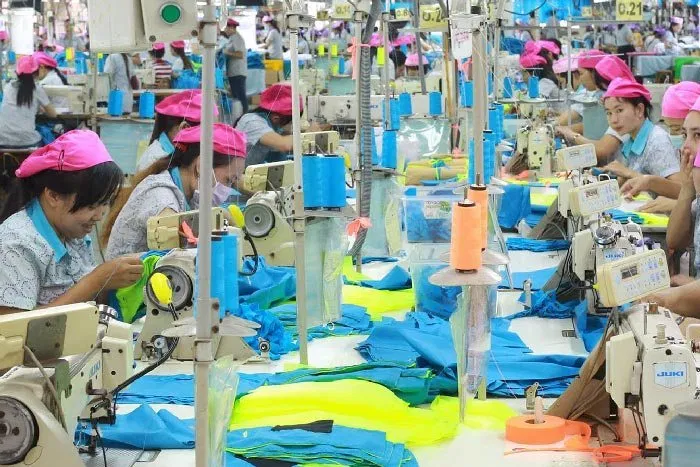 |
| Vietnamese workers in a factory (Illustration photo) |
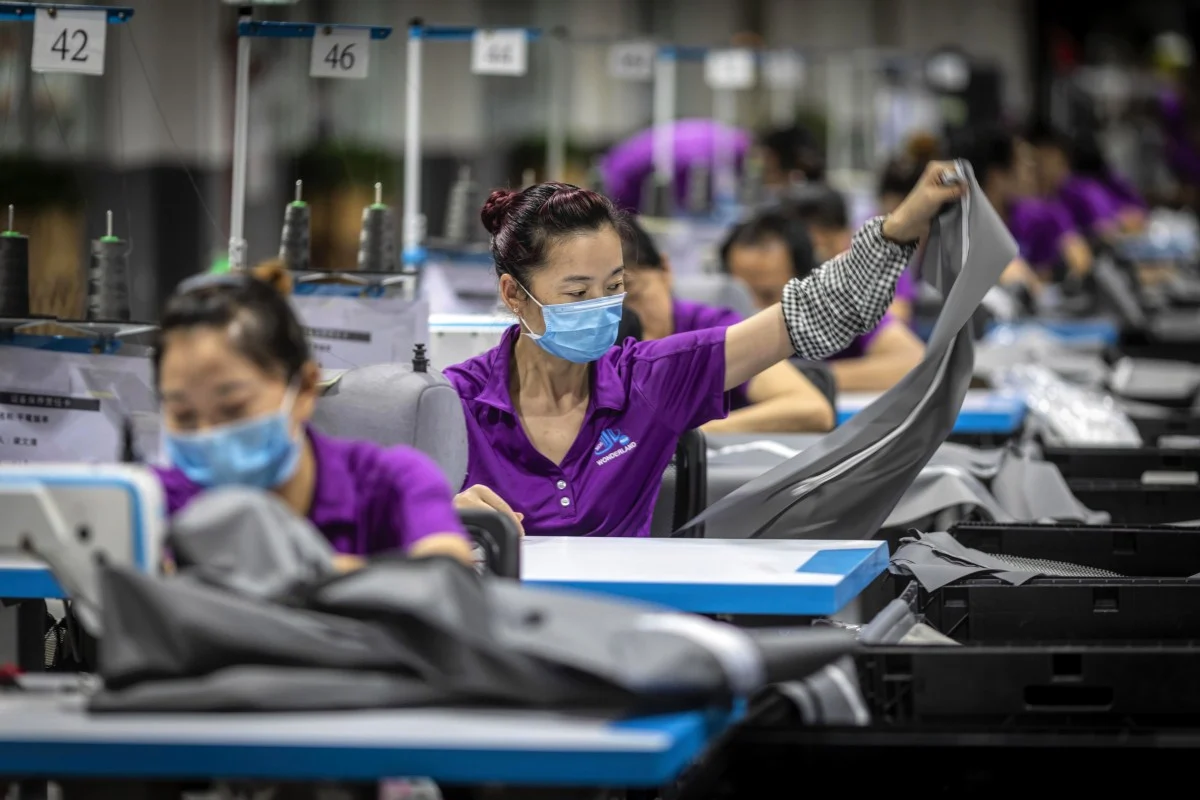 |
| Women work at a nursery products company in Dongguan, in Guangdong province, China, in May 2019. Photo: EPA-EFE |
David Dodwell, executive director of the Hong Kong-APEC Trade Policy Study Group, a trade policy think tank, noted some major differences between Vietnam and China in a recent article in the South China Morning Post: "Why Vietnam will not replace China any time soon as the world’s manufacturing hub".
Size is one. Vietnam’s gross domestic product (GDP) in 2018 was 55 times smaller than China’s, while 15 of China’s provinces have a larger GDP than the whole of Vietnam, analysts note.
Moreover, China has around 800 million manufacturing workers, whereas Vietnam has just 55 million. In 2017, Dodwell noted, China’s share of global manufacturing output was over 28% while Vietnam’s was just 0.27%.
Then there are more technical aspects. Shanghai’s container ports, among the busiest in the world, can process 40 million containers per year, whereas Vietnam’s biggest port, in Ho Chi Minh City, can only process 6.15 million containers.
The myth here is that China remains the world’s factory, supplying cheap, low-tech products to the wealthy markets on the back of immiserating salaries and miserable working conditions that Western workers and their unions would never tolerate.
Replacing that myth over the past two decades is that China has become a massive and increasingly affluent consumer market in its own right, which explains the steady strong flow of manufacturing investment into the country.
China still accounts for 35 per cent of global manufacturing output, but a rising share of this output is for consumption in China’s domestic market. China accounts for just 10 per cent of global household consumption, but it is the source of 38 per cent of the growth in that consumption.
For a large proportion of global multinationals that have built supply chains around China, dilution of activity in China or relocation elsewhere would be calamitous.
The total value added by China’s manufacturing sector was around US$4 trillion in 2018, over 100 times greater than that of Vietnam.
Vietnam’s infrastructure to support inbound investors remains fragile and materially inferior to that of China. Vietnam’s power generating capacity is around 41 million kilowatts, compared to China’s 1.65 billion kilowatts. Vietnam has a total of 2,600km of railways, compared with China’s 131,000km, of which 29,000km is high-speed rail.
Expressways to speed supplies and components across the country to and from factories are still negligible in Vietnam, compared with 136,000km in China. The country has seven of the world’s 10 busiest container ports: compare Shanghai’s throughput of 40 million containers a year with 6.15 million containers through Saigon Port, Vietnam’s largest port.
Therefore, he makes an conclusion that: There is also the fact that China has a fast-growing domestic consumer market, meaning foreign investors can expect big profits without having to export the products they produce in China.
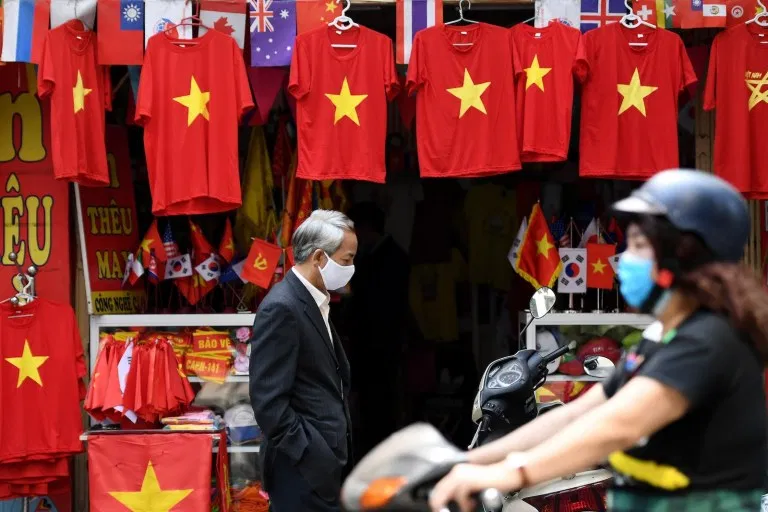 |
| A man wearing a protective face mask walks past a souvenir shop in Hanoi on February 26, 2020 amid concerns of the Covid-19 coronavirus outbreak. Photo: AFP/Nhac Nguyen |
In 2019, Vietnam’s trade surplus with the US rose to $47 billion, up from US$34.9 billion in 2018, according to figures from Vietnam’s General Statistics Office.
Yet if Washington is serious about decoupling supply chains from China and moving a significant number of them to Vietnam, thereby boosting the quantity of Vietnamese exports to the US, then Vietnam’s trade surplus with the US is certain to keep rising.
If Trump wins a second term at November’s presidential election, and if he maintains his obsession with reducing US trade deficits at the same time as he drives supply chains from China to Vietnam, Hanoi will have to delicately balance its position as a post Covid-19 alternative to China.
On the other hand, Michelle Russel, an analyst at Global Data, commented that: "Vietnam is becoming a manufacturing powerhouse. It has a young workforce, lower wages, preferential trade policies, and logistics services with 14 major ports.
Meanwhile, Covid-19 can help Vietnam re-assess the potential of persifying markets rather than relying on China's 1.4 billion consumer market. Opportunities can also be brought by the EVFTA trade agreement which paves the way for more Vietnamese products and services to enter the European market".
Opportunity to turn situation to Vietnam’s advantages
With good operating results of factories in Vietnam, Samsung has more reasons to implement its "southward" strategy more strongly in the near future.
Samsung’s plan is also motivation for many other leading corporations in the world. Foxconn, one of the biggest partners of Apple, said the factories in Vietnam, India and Mexico are running at full capacity, while it is speeding up an expansion plan to minimize reliance on the production line in China.
Vietnam, which has many top brands of the world, has an opportunity to take a step forward in the world’s technology map. It is making big progress in affirming its position as a production base.
| The difficulties in the global pandemic are opportunities for Vietnam to expand its role in the global supply chain. How Vietnam can succeed need wait to see next time of it's development. However, Vietnam, a small country used to be supposed very small, very poor, very undeveloped and very weak but made its lot of miracles in the past. "Nothing is impossible". Look in Vietnam and put our lucks in it's future with a vision. |
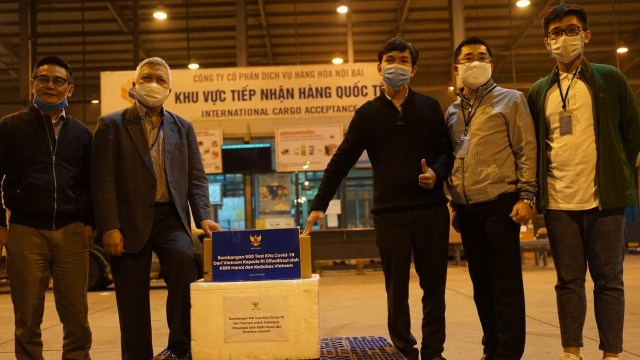 | 500 Vietnamese-manufactured COVID-19 test kits arrived in Indonesia 500 “Made-in-Vietnam” COVID-19 test kits donated to Indonesia have been arrived in Jakarta on April 5 to help the country early detect the virus and contain ... |
 | 88,000 face masks from Vietnam arrived in Italy Italian Ambassador to Vietnam Antonio Alessandro expressed gratitude for Vietnam's medical supplies sent to his country to assist in its battle against the COVID-19 coronavirus. |
 | "Made in Vietnam" is found to be popular and familiar with American by VOA VOA news informed on 26 March that “Made in Vietnam” goods now is becoming more and more popular and familiar with American than ever before, ... |
Recommended
 Economy
Economy







